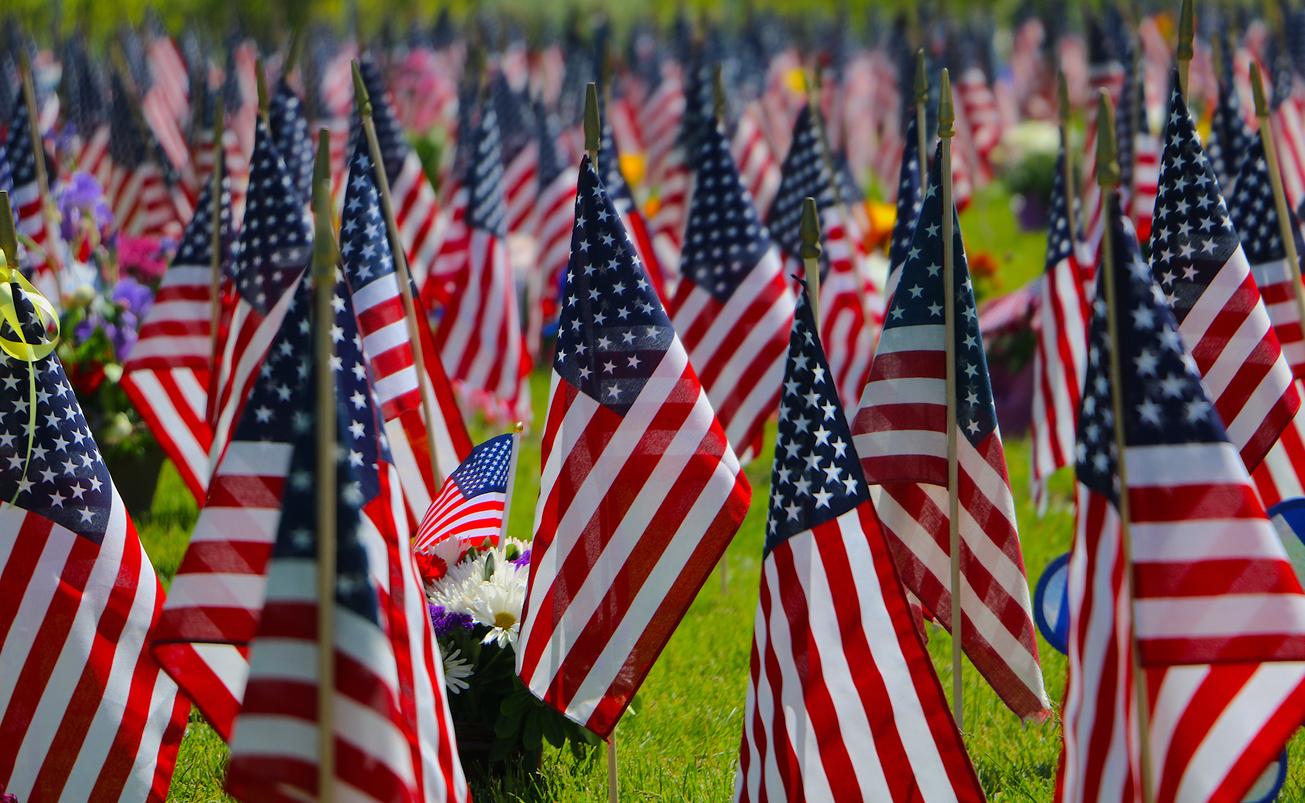The United States passed the grim milestone of 200,000 deaths from COVID-19 today on the first day of fall, cases are rising nationally, and more controversies and developments continue to roil the US response.
Currently, the US fatality count from COVID-19 is at 200,477 among 6,882,969 cases that have been reported, according to the Johns Hopkins online dashboard.
Fatalities outpace earlier projections
To mark reaching the death threshold, the COVID Memorial Project this morning finished placing 20,000 American flags around the Washington Monument. Earlier this summer, models produced for the White House coronavirus task force predicted that the US death toll could reach 169,890 by Oct 1 and that deaths would drop off in July and August before rising again at the end of September and worsening through October and November.
As fatalities outpace earlier predictions, cases are also rising again, as many predicted, due to schools and colleges resuming and cooler weather drawing more people indoors for their activities. The New York Times tracker recorded at least 54,874 new cases yesterday and 428 more deaths, with cases over the past week showing a 7% rise compared to the previous 2 weeks.
Part of the rise in cases is likely due to tens of thousands of extra cases in recent weeks as colleges and universities reopen for face-to-face instruction, the Wall Street Journal originally reported based on study to appear on the medRxiv preprint server. The team estimated that 3,200 extra cases a day in the United States wouldn't have occurred if the schools had kept classes online.
Patterns vary across the United States, and in one promising sign, California's COVID-19 positivity rate last week fell below 3% for the first time, dropping to 2.8%, the Los Angeles Times reported.
Political divides add more bumps to response
Meanwhile, several other developments laid bare the ongoing political divide over the virus and its response, and raised new questions about how federal officials are managing the crisis.
At a campaign rally in Ohio yesterday, President Trump claimed without evidence that the virus poses hardly any threat to young people and that it affects "virtually nobody", Politico reported. He acknowledged that older people and those with underlying conditions are affected.
Also yesterday the Daily Beast reported that a communications official with the National Institute of Allergy and Infectious Diseases (NIAID) spent months downplaying the COVID-19 threat and maligning NIAID Director Tony Fauci, MD, and other US health officials on the conservative website RedState using a pseudonym. After the story broke, the NIAID official announced he was resigning from the agency.
During an interview on "The Daily Show with Trevor Noah" yesterday, Fauci said the country's divisiveness is a roadblock to the COVID-19 response. He emphasized that health precautions provide a pathway to reopening the economy and schools and that the measures are public health—not political—issues that shouldn't pit groups against each other.
In a development that raises new questions about the COVID-19 response, the Washington Post reported today that $1 billion in Cares Act funds that Congress gave the Pentagon to boost the nation's production of medical supplies for COVID-19 such as masks and swabs was mostly funneled to defense contractors to make other equipment, such as jet engine parts and body armor.
In other US developments:
- The US Food and Drug Administration (FDA) is expected to issue a tough new standard for emergency use authorization of COVID-19 vaccines as early as this week, according to anonymous sources familiar with the situation who spoke to the Washington Post. For example, vaccine makers applying for EUAs would need to follow study participants for at least 2 months after receiving their second vaccine dose and at least five people with severe disease and infections in older people must appear in the placebo group for each trial. The extra requirements make it unlikely that a vaccine could be cleared by Election Day.
- A vaccine advisory group to the Centers for Disease Control and Prevention (CDC) has delayed a vote on COVID-19 vaccine prioritization, the WSJ originally reported. The Advisory Committee on Immunization Practices (ACIP) has signaled that health workers are the top priority, but they are still weighing whether essential workers or seniors and those with underlying health conditions should be the second highest priority.
- Though massive efforts are under way to speed the development and deployment of COVID-19 vaccines, little work has been done to gear them for children, the New York Times reported, quoting experts who said it could take at least a year to get a vaccine ready for children.
- North Carolina health officials and their partners at the CDC today reported contact tracing experiences from two counties, which found that though the health department investigated the majority of index cases, a high proportion of patients didn't report contacts and many of the contacts couldn't be reached, factors that likely limit the impact of contact tracing as a mitigation step. They reported their findings in an early online edition of Morbidity and Morality Weekly Report.
International developments
In international COVID-19 developments, India's cases declined yesterday for the first time in a month. It still leads the world with the most daily cases, with 75,083 reported yesterday.
The global COVID-19 total has climbed to 31,433,180 cases, and 966,970 people have died from their infections, according to the Johns Hopkins online dashboard.
Part of the latest global rise in cases is due to steady increases in Europe. The United Kingdom's Prime Minister today warned of complacency and signaled that Parliament will take up new measures next week. For now, starting on Sep 24, bars and restaurants across the country must close at 10 pm.
In Sweden, cases are rising again, which could prompt new measures targeting Stockholm, Reuters reported. Elsewhere, the Netherlands reported another daily high, racking up more than 13,000 more cases, and Russia's cases are also on the rise, with 6,215 reported yesterday, its highest number since the middle of July.




















